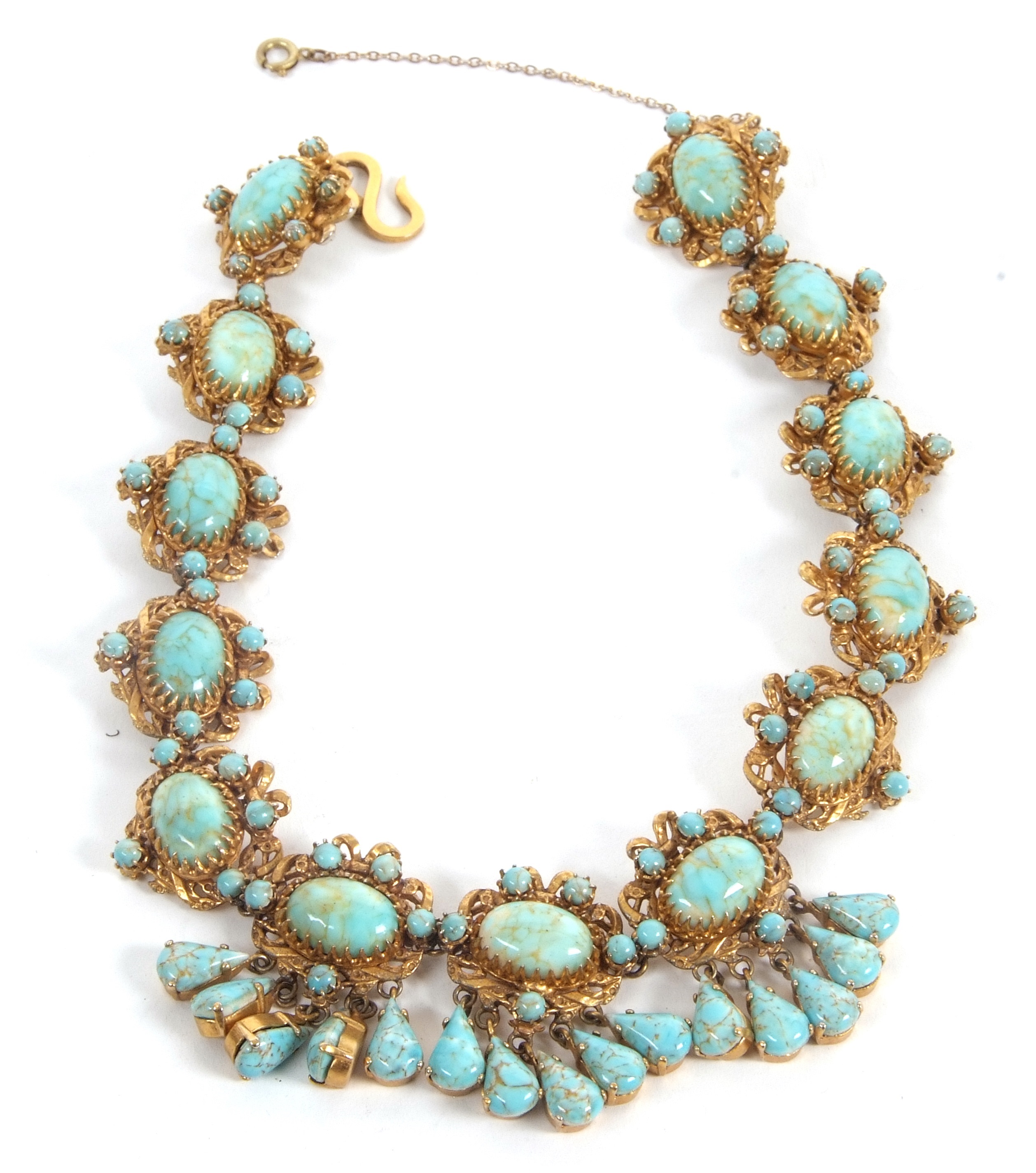

23/05/2025 General News
Every other month, we hold a specialist Jewellery and Costume Jewellery Sale at Keys, which attracts buyers from all over the world, write Angela Marshall.
I always assumed that the name of the sale was self-explanatory, but it has recently given rise to a few questions about what is meant by the term ‘costume jewellery’, so perhaps it is a good time to explain what that means – and why costume jewellery is certainly not something to be looked down on.
The definition of costume jewellery is really quite simple: it is jewellery which is made with materials which are not precious metals or stones. In that sense its intrinsic value is indeed less than what might be termed ‘fine’ jewellery, but that is not the whole picture.
The value in costume jewellery lies in the appeal of its design and its aesthetics, and because of this there is a large group of collectors who regard it as desirable. With prices now reaching into the thousands, it is no longer appropriate to regard costume jewellery as the poor relation.
Such jewellery has existed for almost 300 years, with 18th century jewellers starting to make pieces with gilt metal, cheaper stones and glass. But it wasn’t until the 20th century when it really started to come into its own, with the rise of a middle class which wanted attractive jewellery – including from top names – but more affordable than the then rarefied world of fine jewellery.
Seen more as a fashion accessory, the genre attracted many of the big names in the fashion business, including Dior, Chanel and Yves St Laurent. Alongside these there emerged a new kind of jewellery designer who specialised in costume jewellery, including Miriam Haskell, Kenneth Jay Lane and Crown Tifari.
The cachet of wearing a piece designed by such famous names was almost equal to that of wearing precious jewels, and costume jewellery was also known as fashion jewellery – perhaps a more accurate name.
With the explosion in interest in vintage and retro (not just in jewellery, but in fashion, design and furniture), it is not surprising that high-end costume jewellery has become very collectable, and is now seeing strong demand in the saleroom.
Collectors appreciate it for its design and look; you may think that such pieces are bought to be worn, but there is a significant community for whom collecting is the driving motivation.
We recently sold a faux turquoise necklace from the 1950s which was designed by Mitchel Maer for Christian Dior, for £1,300. Made of glass and gilt metal, its appeal was in the name of the designer – and American who worked for Dior for just four years between 1952 and 1956 – and also because the piece bore the original maker’s plaque, something of a rarity.
The necklace was bought by a European collector. Overseas buyers are commonplace in the world of costume jewellery, and we regularly despatch pieces all over Europe, to the US and to Asia.
There are four factors which will determine how desirable (and hence how valuable) a piece of costume jewellery will be in the saleroom. The first is the name of the designer; the second is the rarity of the piece; the third is, as always, condition. The fourth factor is rather more difficult to put your finger on, because it is more subjective: the aesthetic appeal.
Interestingly, the buyers of costume jewellery and bidders for ‘fine’ jewellery tend to be quite distinct; there is little crossover between the two. The truth is that there is a healthy market for both, and it is simply wrong to dismiss costume jewellery as less important.
Keys holds bi-monthly Jewellery and Costume Jewellery Sales. The next one takes place on Wednesday 18th June; consignments are still being accepted. If you would like an expert appraisal on any piece of jewellery or costume jewellery, contact angela.marshall@keysauctions.co.uk.